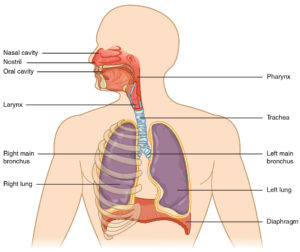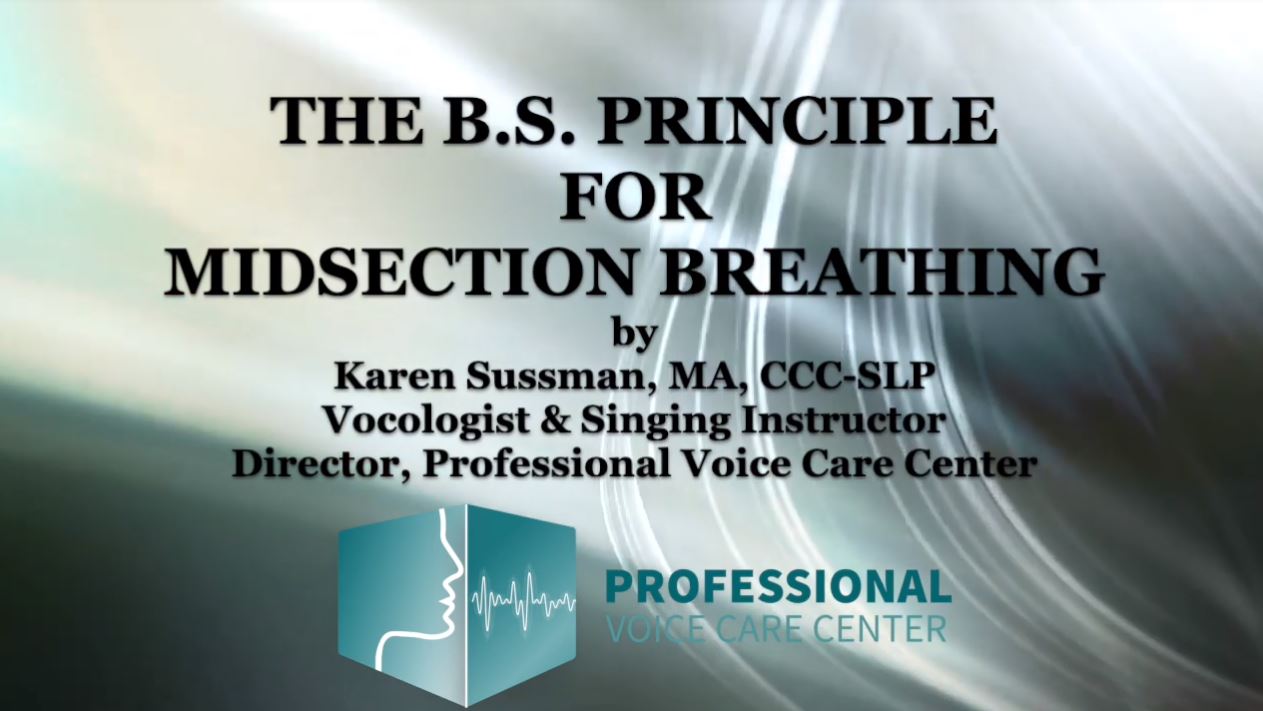In this fast-paced world of work deadlines, high-stakes presentations, and competition for clients, stress is a given. Add to that the stress of your SECOND job: caring for your family, with carpooling, rushing to your kids’ appointments, and trying to keep up with exercise, a good diet, and enough sleep. Sure enough, stress becomes an unfortunate but real way of life. I often hear my clients complain of high levels of stress, anxiety, depression, and sleeplessness on an ongoing basis.
To deal with this onslaught of symptoms, people try meditation, acupuncture, tai chi, yoga, even resorting to anti-anxiety or anti-depression medication.
But what about the proven relaxation technique that needs no prescription or high-tech equipment? The technique that also happens to improve the speaking and singing voice, that may also lower blood pressure, reduce stress and anxiety, activate the “relaxation response” (see our earlier blog on this phenomenon here, ) maintain lung capacity, improve sleep, and even reduce tension headaches? I’m talking about deep breathing, of course.
Deep breathing, or what I prefer to call midsection breathing, does all these things and more. But although everyone knows they’re supposed to be using it, not many people actually know how to breathe correctly. People are often confused about the anatomy and physiology of proper breathing. For an excellent resource, I recommend an amazing animated breathing physiology video by Alexander Technique teacher Jessica Wolf, called The Art of Breathing. Ms. Wolf is the founder and director of the first post-graduate training program for Alexander teachers in “The Art of Breathing”. Wikipedia also has a good explanation of diaphragmatic breathing and its health benefits, as well as an animated diagram of breathing physiology.
Many people don’t even know what the diaphragm is or where it’s located. The diaphragm is a dome-shaped muscle located under the lungs, that attaches to the bottom ribs. It’s like a “floor” to the thoracic cavity (chest) and the ceiling of the abdominal cavity. When we inhale, the diaphragm contracts and lowers like a jellyfish spreading out, and the rib cage expands, drawing air into the lungs. As the diaphragm descends, the abdominal wall relaxes and expands. As we exhale, the process reverses. The diaphragm relaxes and rises back up into its dome shape and the abdomen contracts and goes inward. The air now flows up and out of the lungs, up through the vocal folds (“vocal cords”) inside the larynx (the “voice box”) at the top of the trachea (the “windpipe”).
Here’s a diagram of the respiratory system with the diaphragm at the bottom, courtesy of the BC Open Textbooks program (from The Organs and Structures of the Respiratory System by Rice University).

Even if you understand the physiology of midsection breathing, you still may be unsure of how to accomplish it. Many voice teachers will teach this type of breathing by having you lie down on the floor with your hands or even a heavy book on your abdomen. (Here’s an illustration of the “hands” technique from the Cleveland Clinic. This method works well, but doesn’t always carry over into standing position, unless you’re very good at building a muscle memory. So, let’s learn a simple technique you can do at home any time, to improve your breathing for speaking and singing, and begin to reduce all that stress.
So, I’ve boiled down this breathing technique into a simple idea I call “The B.S. Principle”. The “B” stands for “When you Breathe, the Belly gets Big. The “S” stands for “When you make Sound, get Skinny” or “When you Support/Speak/Sing, get Skinny”. Breathing and supporting are basically opposites. You breathe in (i.e., relax the abdominal wall) before you speak or sing, and you support (i.e., contract your abdominals) when you make sound. Sound, whether for speaking or singing, is produced on the exhaled air stream. (This is a bit oversimplified; we teach this in more detail in our voice lessons).
To feel this expansion/contraction of the abdominal area, use a non-stretch belt around your midsection, right across your belly button. (If you don’t have a non-stretch belt, you can use a tape measure, or in a pinch, a snug pair of waist-high jeans with no stretch). It may be beneficial to put one hand on the upper chest, to monitor for any unnecessary upward rise of the chest. When you inhale, your abdominal area should expand, so the belt should then feel pinchy and tight. If you use reverse breathing, by elevating your chest and sucking in your belly, the belt will loosen, and you’ll know you breathed incorrectly.
As you exhale, bring the abdominal wall in slowly and steadily as you blow a steady stream of air out through pursed lips. The belt should now loosen. Again, if you breathed using a reverse pattern, and the belt now gets tighter, you’ll know you did it wrong.
If you still have difficulty with this technique, roll the upper half of your body down and hang like a rag doll, head tucked down, with knees bent for back comfort. Now when you inhale, just let your belly hang down with gravity, toward the floor. When you exhale, push your abdominal wall in/up toward your spine. Once this abdominal expansion feels more natural, slowly roll up until you can breathe the same way standing. Here’s my quick video of the B.S. Principle:
So now you know that correct breathing technique is NOT B.S. It’s not only good for voice, it’s good for LIFE. Practice diaphragmatic/abdominal breathing a few minutes each day (before bed is particularly relaxing, and use it any time you feel stressed). Your speaking and singing voice will improve, you’ll feel energized, hopefully less anxious, and your sleep may improve. Breathe better and live better! ?







